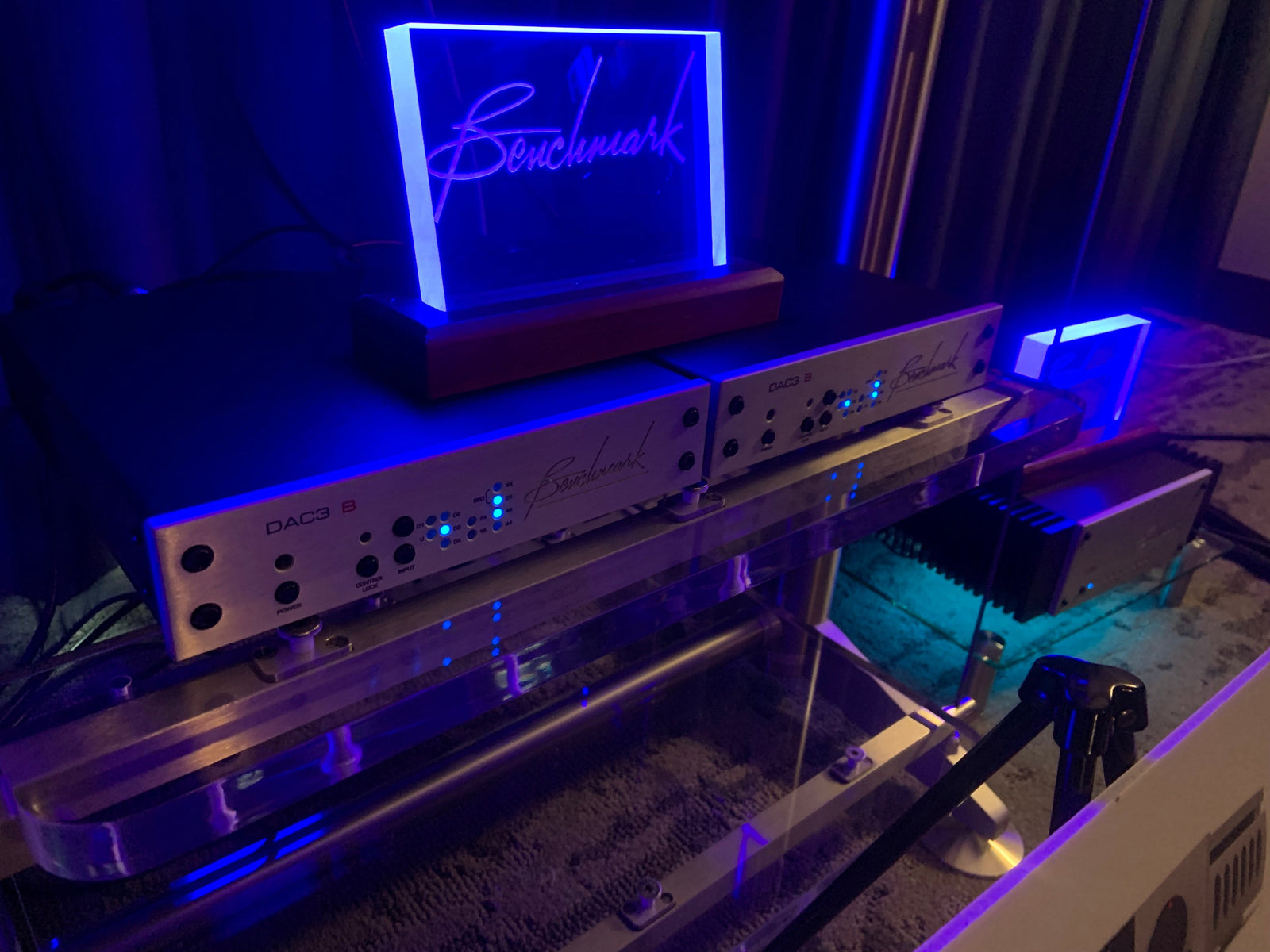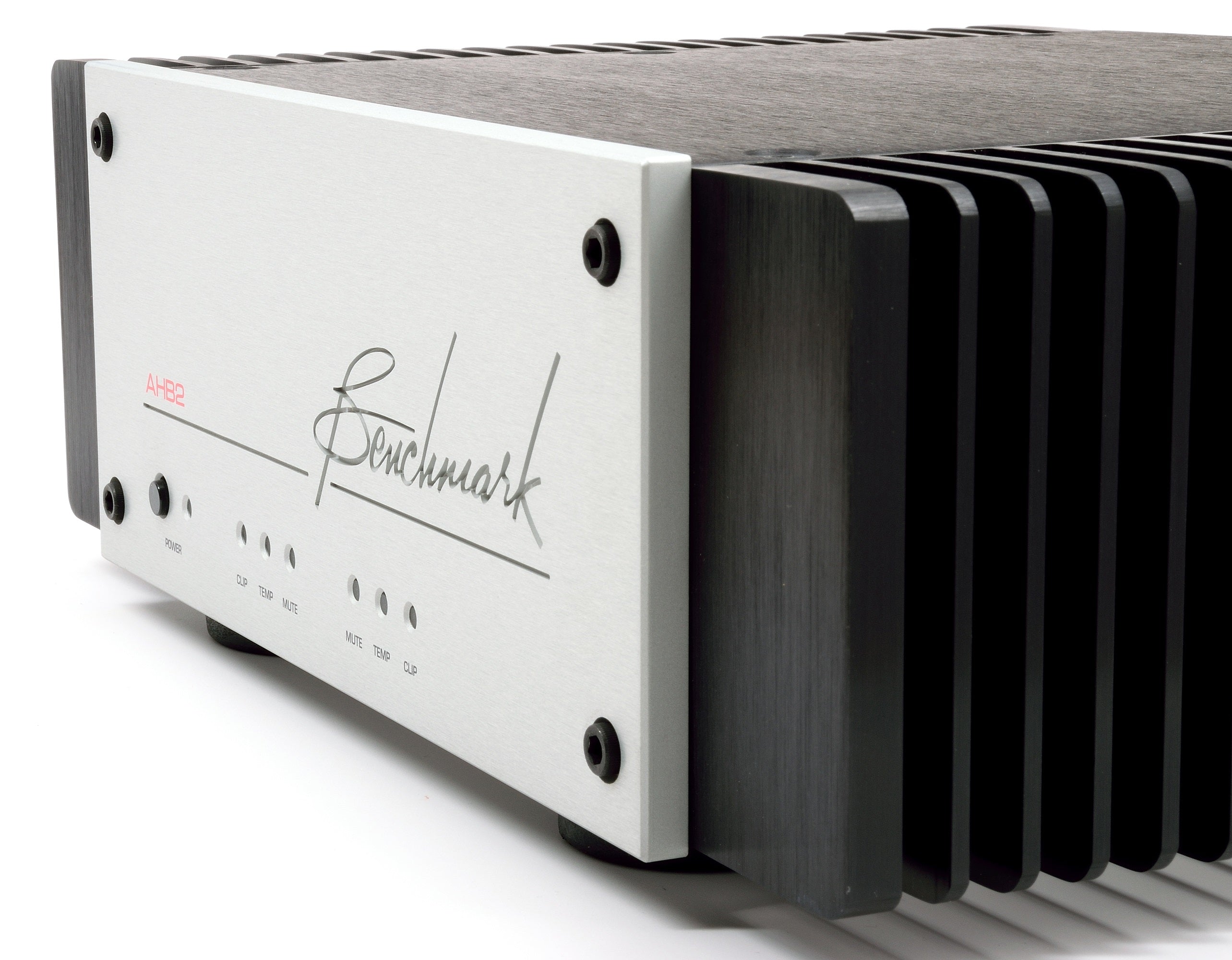Buy one component and save 10% on up to 2 cables. Buy 2 components and get 4 free cables. Free shipping on USA orders over $700. We are closed 1/1/26 and 1/2/26.
Buy one component and save 10% on up to 2 cables. Buy 2 components and get 4 free cables. Free shipping on USA orders over $700. We are closed 1/1/26 and 1/2/26.
AHB2 Driving Laufer Teknik Line Array - AXPONA Show Report - LongLiveAnalog
by Benchmark Media Systems April 18, 2023

"Laufer Teknik - The Note line array - The most immersive listening experience I had the entire show."
"There is no sweet spot because everywhere is the sweet spot. Even behind the speakers sounded incredible!"
"SVS Subs doing the low end work and Benchmark 380 watt class H monoblocked amps driving the arrays."
"I spent an extended amount of time in this room."
- LongLiveAnalog, r/audiophile on Reddit
Signal Chain
The signal chain included:
- Laufer Teknik "Memory Player"
- DEQX Digital Crossover with Room Correction
- Two Benchmark "DAC3 B" D/A Converters - 1 for Arrays and 1 for Subs
- Two Benchmark "AHB2" Power Amplifiers - Bridged Mono
- Two Laufer Teknik "The Note" Line Arrays - 4.9 Ohm Impedance
- Laufer Teknik "Liquid Cable" Speaker Cables
- Two SVS "SB-3000" Subwoofers
Comments from Benchmark Media Systems:
The line arrays were crossed over to the subs at 140 Hz. Laufer Teknik recommends two subs and a crossover frequency between 140 and 200 Hz.
The Note line arrays each use 48 full-range drivers. These small drivers have excellent transient response. The large number of drivers (96 total) means that each driver is doing very little work, so the THD is very low, even when producing impressive sound pressure levels.
The full-range drivers eliminate the compromise of a crossover and they allow a narrow, low-diffraction column that provides a near perfect 360 degree radiation pattern. As noted by the reviewer, the sound behind the array is nearly identical to that out front. This ideal radiation pattern projects a natural and tightly focused stereo image that can be enjoyed from almost anywhere in the room. This experience is a stark contrast to the limited sweet spot delivered by box speakers. In a conventional system, the sound gets sucked into the nearest box when you move out of the sweet spot.
At the show I enjoyed watching people experience the line array for the first time. They would move around the room, astonished by the image of musicians playing at or behind the curtain in the front of the room. Many commented that they could not believe that the sound was coming from the line array. Curiously, the line arrays do not even sound loud when you walk up to them. As you walk closer within the line array's near field, you are hearing less of the array elements and you do not experience the expected increase in loudness. This uniformity of loudness with distance is one key to the creation of a realistic stereo image. This 3-dimensional image is formed behind the speakers, giving the impression that the musicians are in the front of the room, in very focused locations.
This stereo experience can be enjoyed everywhere in the room, and it is distinctly different than the so called "immersive" experience produced by a surround system. I am personally not a fan of surround sound. I often say; "surround systems deliver sound from everywhere but sound from nowhere". What I mean by this is that they fill the room with sound, but you cannot tell where any musician is located unless they are assigned to a particular speaker. In contrast, this line array system reconstructs an image of the original performance if the performance was captured with stereo microphone techniques.
The line array projects a focused pattern that greatly reduces the energy reaching the ceiling and floor. The bulk of the energy is delivered at a height that comfortably spans seated and standing positions while avoiding the ceiling and floor. The height of the array column is more than sufficient to keep the entire room in the line array near field. This near-field pattern falls off at a rate of less than 3 dB for every doubling of distance instead of the typical 6 dB per doubling with box-style loudspeakers. The result is a precisely focused stereo image that can be enjoyed almost anywhere in the room. There is never a sense that the sound is coming from the speakers, even when moving away from the center of the room.
The low-distortion and phase accuracy of the AHB2 power amplifiers make them the perfect match for these spectacular and unique loudspeakers. The AHB2 amplifiers easily drive the 4.9 Ohm load in stereo mode or in mono mode. At the show, we used a pair of AHB2 amplifiers in mono mode. We demonstrated the system at about 20 dB below its maximum output, so we certainly did not need the 6 dB increase in output level that is achieved when running the amps in bridged mono.
If you haven't had the chance to hear a line array, visit Laufer Teknik at the next show, or call them to arrange a demo, and experience stereo as it was meant to be. I would add that The Note line array is not just any line array. The full-range drivers are very small and this allows a very narrow low-diffraction column that disappears acoustically. The near identical front and rear dispersion is a testament to the effectiveness of the smooth and narrow column.
- John Siau, VP Engineering, Benchmark Media Systems, Inc.

Also in Reviews

DAC3 - Stereophile 2025 Recommended Component - Digital Processors
by Benchmark Media Systems October 02, 2025
DAC3 - Receives Stereophile's Highest "Class A+" Rating
"The DAC3 was all about depths, in several respects...I heard deeper into the music."
"All I can say is Wow!"
- John Atkinson

LA4 - Stereophile 2025 Recommended Component - Preamplifiers
by Benchmark Media Systems October 02, 2025

LA4 - Receives Stereophile's Top Rating for Preamplifiers
"Benchmark's LA4 is the widest-bandwidth, widest-dynamic-range, lowest-noise, lowest-distortion preamplifier I have encountered."
- John Atkinson
"The LA4 is probably the most transparent and revealing audio component I've ever used. It does not seem to leave any fingerprints on the sound."
- Kalman Rubinson

HPA4 - Stereophile 2025 Recommended Component - Headphone Amplifiers
by Benchmark Media Systems October 02, 2025

HPA4 - Receives Stereophile's Top Rating for Headphone Amplifiers
"The LA4 preamplifier was the widest-bandwidth, widest-dynamic-range, lowest-noise, lowest-distortion preamplifier I had encountered at that time. . . . To those virtues, the HPA4 adds equally superb balanced and single-ended headphone outputs."
- John Atkinson






